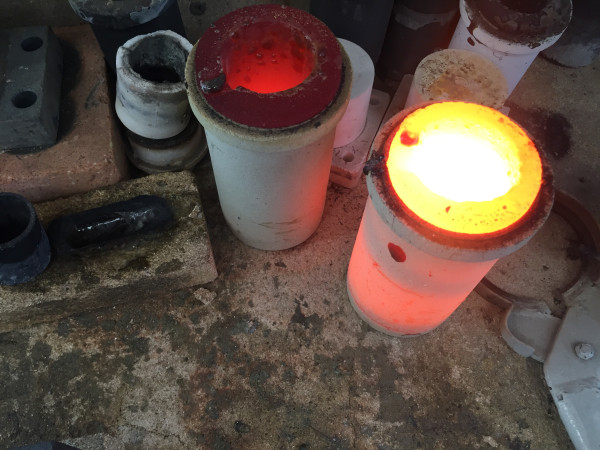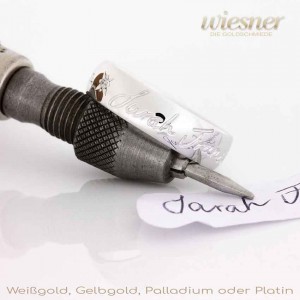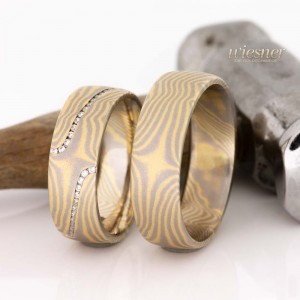Fine gold: The pure gold in jewelry making
Gold, a symbol of wealth and stability, has a long and fascinating history in human history. Fine gold in particular, which is almost pure gold, plays an important role in jewelry making. This article sheds light on the properties, use and special features of fine gold and gold alloys in the jewelry industry.
What is fine gold?
Fine gold is gold in its purest form, with a purity of 999.9 parts per thousand or 24 carats. It is virtually free of other metals, which gives it an incomparable purity and radiant shine. Due to its softness, fine gold is rarely used on its own for jewelry, but usually in the form of alloys to increase its hardness and resistance.
History and alloys of gold
The importance of gold alloys
Gold alloys consist of gold mixed with other metals such as silver and copper. These alloys are necessary to improve the mechanical properties of gold, as pure gold is too soft to be used for jewelry that is in daily use.
Until the 19th century, it was forbidden to alloy gold with other metals in Europe. It was only later that gold, silver and copper were used together, as these metals often occur together in nature. This three-metal system has established itself as the standard for classic jewelry alloys and is still used today.
Variety of colors through alloys
By combining gold with silver and copper, different shades of color can be created. Here are a few examples:
- Rich yellow: This classic color is achieved through a balanced mixture of gold, silver and copper, as in the Mokume Gane wedding rings Abura.
- Light green: A higher proportion of silver creates a greenish hue. Green gold.
- Salmon pink: A higher proportion of copper produces a reddish or pinkish hue.
- Silver white: With a very high proportion of silver, a whitish shade is achieved.
In addition, the properties of the alloys can be further influenced by the addition of other metals such as palladium or nickel, depending on the requirements.
Fineness of gold alloys
The fineness of gold alloys is given in parts per thousand and describes the proportion of pure gold in the total weight of the alloy. Common finenesses in jewelry production are
- 333: Contains 33.3% gold, often used in industrially manufactured jewelry.
- 585: Contains 58.5% gold, a common alloy for high-quality jewelry.
- 750: Contains 75% gold, often used for luxury jewelry.
- 999: Pure gold or fine gold, rarely used on its own, but important for special applications and investments.
In Germany, jewelry and equipment may be alloyed and offered in any gold purity. The stamping of the fineness is not mandatory, but in the case of stamping, the legal regulations must be observed. The exact fineness can only be determined by laboratory analysis. In everyday life, a random sample is often used to determine the approximate fineness.
Use of fine gold in jewelry production
Mokume Gane technique
A special application of gold alloys, including fine gold, is the mokume gane technique. This traditional Japanese forging technique creates unique patterns reminiscent of wood grains. Mokume Gane wedding rings, such as the Abura rings, use the variety of colors and properties of different gold alloys to create stunning and individual pieces of jewelry. More about Mokume Gane.
Wedding rings and engagement rings
Fine gold is often used in wedding bands and engagement rings, either alone or in alloys, to ensure the durability and resistance of the jewelry. The warm, yellow color of gold symbolizes love, constancy and prosperity, making it perfect for these meaningful pieces of jewelry.
Luxury jewelry
750 gold is often used for luxury jewelry as it offers an excellent balance between purity and durability. This alloy is ideal for elaborate designs and pieces of jewelry that require a high fineness to emphasize the luxurious character.
Care and maintenance of fine gold jewelry
Careful maintenance is necessary to preserve the beauty and luster of fine gold jewelry. Here are some tips:
-
Cleaning: Clean fine gold jewelry regularly with a mild soap solution and a soft cloth. Avoid abrasive cleaning agents that could scratch the surface of the gold. Jewelry cleaning instructions.
-
Storage: Store fine gold jewelry separately from other pieces of jewelry to avoid scratches. It is best to use a soft jewelry box or a jewelry bag.
-
Avoid chemicals: Avoid contact with harsh chemicals, perfumes and hairsprays, as these can damage the gold. Take off your jewelry when you do housework or go swimming.
-
Professional maintenance: Have your fine gold jewelry checked and polished regularly by a professional to remove scratches and maintain its shine. Specialty jewelry care stores.
All in all:
Fine gold, in its purest form, is a fascinating precious metal with a rich history and versatile applications in jewelry making. Alloys with metals such as silver and copper create different shades and properties that make fine gold suitable for a variety of jewelry. Whether in classic wedding rings, luxurious jewelry or in the traditional mokume gane technique, fine gold remains a timeless and treasured material loved for its beauty and durability.



